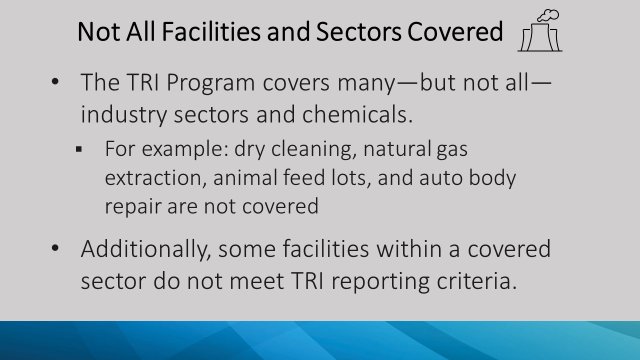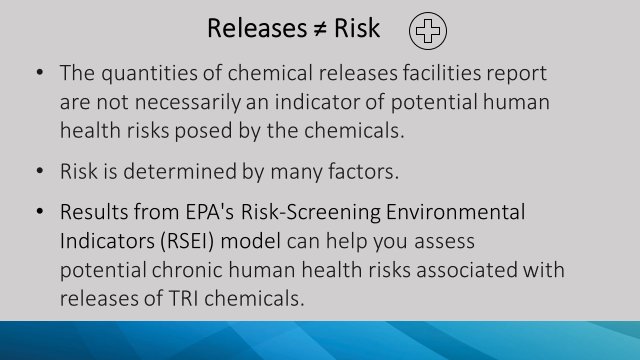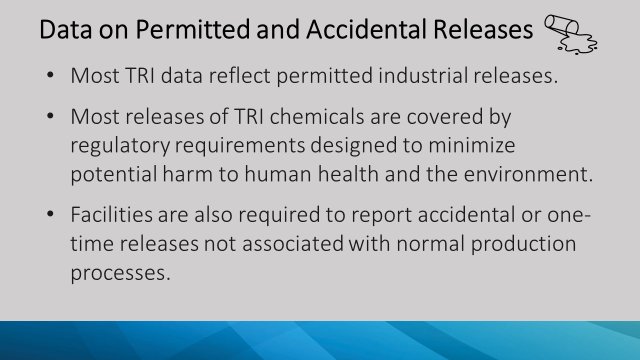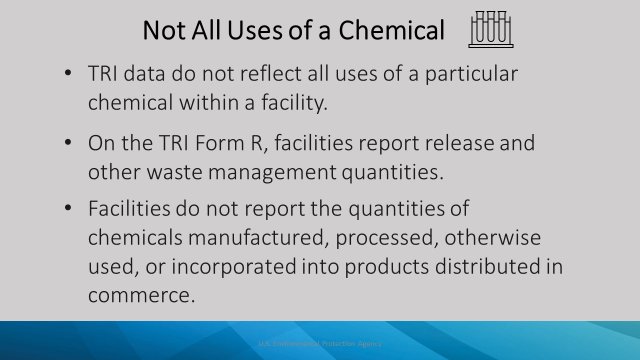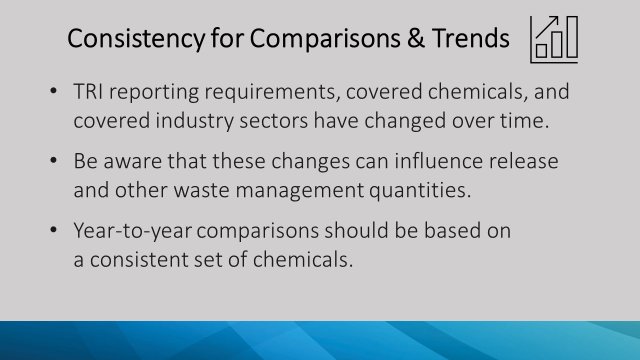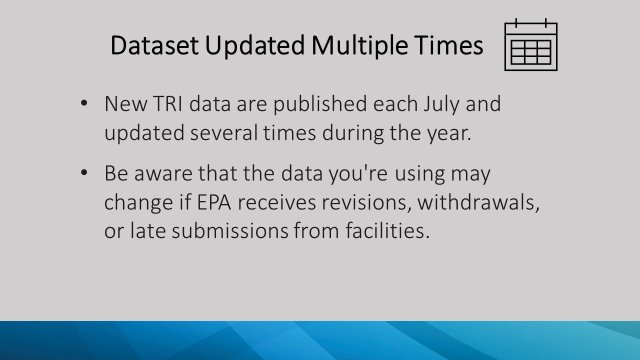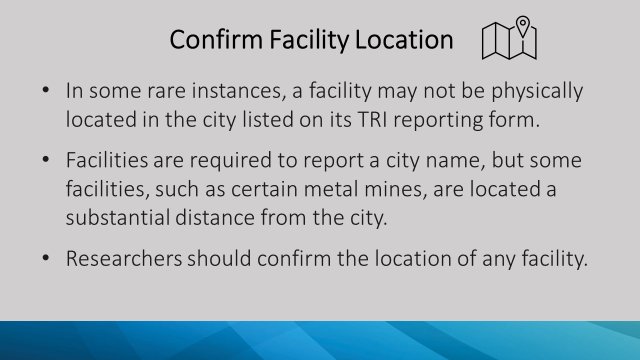TRI for the Press
The Toxics Release Inventory (TRI) provides more than 30 years of multimedia (air, water, land) industrial toxic chemical management data. Annual data collection and periodic data refreshes make the TRI one of EPA’s most current datasets.
Have a deadline?
Email press@epa.gov as early as possible for help accessing, understanding, and using TRI data.
Tips for Using the Data
- Browse the TRI glossary to familiarize yourself with the most common TRI terms.
- Review the release details when looking at specific chemical or facility data. Not all releases are equally likely to result in the exposure of nearby populations. For example, in general, people are more likely to be exposed to chemicals released into the air than to chemicals in waste disposed of in a secure landfill.
- Consider the time of year and the name of the online tool or webpage from which you accessed the data when communicating with EPA and the public. The dataset is updated multiple times during the year, and not all the online TRI tools are updated each time.
- For example, new data are published each July, and from mid-July until October, these new data are considered "preliminary" and are only available in the Envirofacts TRI searches and in downloadable data files. In October, the complete, quality-checked dataset is available in most of the online TRI tools. See Current Status and Planned Updates of TRI Tools for details.
- Remember that the TRI contains a lot of information, not all of which may be relevant to you or useful for your purposes. Contact press@epa.gov, and you will be directed to TRI Program staff that can help you find the best tool and identify relevant data.
Choosing the Best TRI Tool
EPA makes TRI data available through multiple online tools. Choosing the most suitable tool primarily depends on your information needs (summary level or detailed) and how much time you have (working on a tight deadline or a long-term investigation).
| Examples of Fact-Finding Questions | Recommended Tool |
|---|---|
| Has XYZ Company ever reported to the TRI, and if so, in what years? | Envirofacts TRI Search |
|
How does XYZ Company's environmental performance compare to others in the same industry sector? Has the facility ever reported pollution prevention activities? |
TRI P2 Search Tool |
|
What TRI-reporting facilities are within 3 miles of a certain city/state, and what are the demographic characteristics of the surrounding areas? |
TRI Toxics Tracker |
|
Where can I easily get all data for facilities in the XYZ industry sector for 2021? |
Basic Plus Data Files |
For the complete list of TRI tools, visit the TRI Data & Tools webpage.
Using TRI Data: Important Considerations
Please be aware that TRI data do have limitations. When using the data, consider the important points shown below. All of these points are explained in more detail in Factors to Consider When Using TRI, which is available in English and Spanish.

